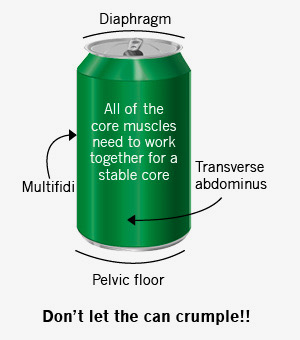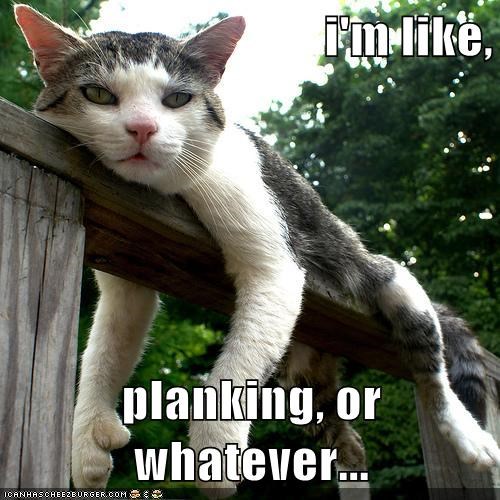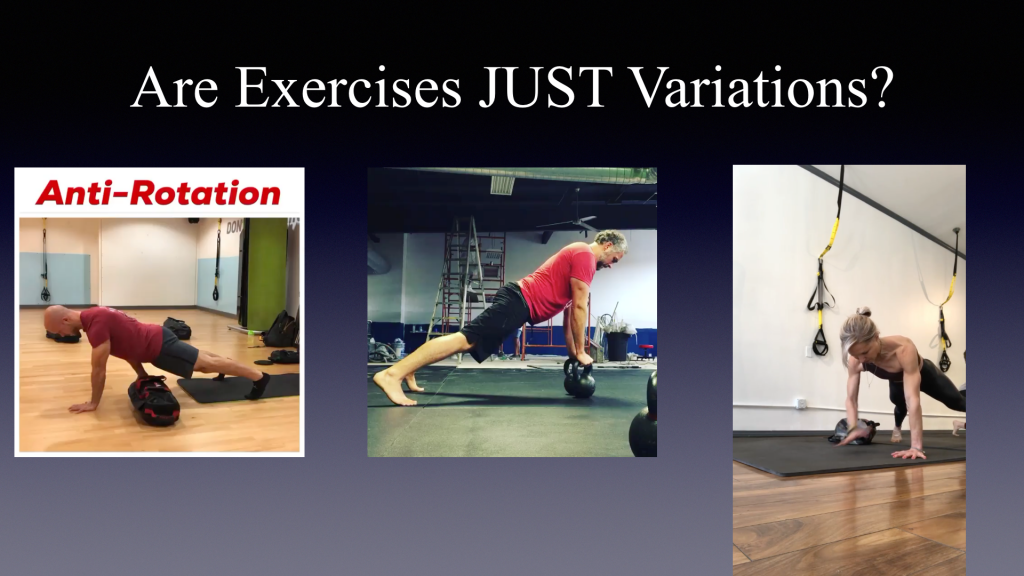A Better Way of Building Core Strength Part 1
2020-02-2
When it comes to making people better I have found no faster way than improving core strength. Hopefully if you have been reading our blogs for any time, you know that when I refer to core strength I’m not just talking about the abs. The 35 muscles of the core that must work in perfect harmony that provide us stability are key. Think of core being the foundation to which our arms and legs function.

Love this analogy of what the core is suppose to do!
Meaning, if you think your arms and legs aren’t as strong as they should be, it could have a lot to do with your core strength. If you don’t have good mobility in your shoulders or hips, it can be a lot to do with your core strength.
Now, core strength and stability are two different things, but for the sake of this post I’m going to use them one in the same for ease of making complex subjects more relatable.
When it comes to improving our core strength we have largely moved in a more positive direction in the industry with drills like planks over those like sit-ups, side bends, and so forth. Why would drills like planks be better? For one, they actually teach the core to function as they will have to in life and sport. Secondly, they have very low risk for issues of the low back, pretty good win-win.
The problem with building better core strength with drills like planks is knowing where to start and where our training should go. Unfortunately, as an industry, we have given people very poor systems so most are left on their own to do bad planks, poorly program planking into the workouts and so forth. There is a better way, or for you Mandalorian fans, “this is the way”;)

Building A Better Plank
Where so many well intended programs go wrong is that they start people with the full plank and don’t teach them HOW to use their core correctly. Being in a full plank is often too difficult for those beginning to train. Holding your bodyweight with the right intent in a full plank is MUCH harder than most realize.
Going to the knees isn’t going to be actually where we start because even that can have limitations in how people are aware of using the feet and stabilizing their shoulders. A DVRT drill that is VERY misleading is our tall kneeling press outs. At first glance, it can be hard to know what we are trying to accomplish or what muscles we are working.
DVRT Master, Cory Cripe breaks down the little things of our tall kneeling press out that many people miss.
While there are progressions within our press out that we can use, I want to focus more on concepts than give you every exercise possible. Worth noting , in DVRT, we ALWAYS have a way to make things a little bit more difficult or a bit easier.
Bringing the concepts and lessons of the press out to a more challenging environment to demonstrate greater core strength we don’t go plank yet! Instead, we use the bird dog as a bridge to more challenging plank movements. However, like everything we do in DVRT, it isn’t the goal just to do the movement, we want to understand how we are using the body during the movement. That is why I break down with physical therapist, Jessica Bento, how we begin better layers to event the bird dog so we achieve better results.
Don’t think there aren’t ways to make these bird dogs serious core strengthening work! Check out how strength coach, Joel Gunterman, demonstrates higher levels of these movements that get us ready for where our planking should be going.
https://www.instagram.com/p/BveKLmLgFt0/
We Planking Now?
It may seem odd, but doing the classic plank that you see very often see is actually WAY more intense and advanced that we give credit for in our training. That is why we see so many bad planks, people know it is a good exercise, but a good exercise is relative to each person. For many, spending time on the above drills is going to go much further in achieving good results than trying to rush to more advanced versions.
Again, the intent is WAY more important than the exercise itself. What DVRT Master, Cory Cripe breaks down is those valuable lessons of core strength and then why we use the Ultimate Sandbag to build layers.
https://www.instagram.com/tv/BziqEovHZFf/
Once we have the plank down you see that Cory introduced the great progression of trying to resist unwanted movement which is what performance expert, Dr. Brandon Marcello calls the true point of stability training. However, people often misunderstand intent and progression here. Meaning that we see people dragging, rowing, and doing all sorts of things in the push-up plank position to challenge the core not to move. Sadly, we don’t understand how these drills are not equal or even doing the same thing. Let’s look at an example….
Two weeks ago when I was presenting at the Perform Better conference in San Francisco I was breaking down these very ideas. Below you see what looks like planks all designed to resist movement.

You see Greg doing a lateral drag, Cory doing a kettlebell renegade row, and Larisa doing a hand to chest touch. All are resisting rotation as they plank, but there is a progressional series I would recommend. If you ask most coaches, they would say that Larisa’s version is first because she has no weight, that is a mistake! When we use just our bodyweight we have to be more reflexive with our strength because we don’t have load giving us feedback. In other words, you have nothing to assist you, your body has to have engrained proper movement patterns and habits.
So, what would be the proper progression? Actually it would be Greg first, Cory second, and Larisa last. You have to understand in the lateral drag we are using resistance, but we are using that friction to give us feedback upon how to control the core. Grabbing the handle the right way we connect the chains of the body that help us create that core strength. Meanwhile, in the Renegade Row, Cory doesn’t have as much feedback because of the lack of friction (which is unique to the dimension of the Ultimate Sandbag. However, grabbing the handle of the kettlebell, driving into it, and the row itself still provides Cory tension/feedback and some stability. That makes Larisa’s the most difficult due to what I discussed above!
If you are starting to think about not just the plank, but core strength in a different way that is a good thing. The more we understand about the body and the intent behind each exercise, we can create better solutions. That is the goal of using any exercise right? The ability to use a movement to solve a need!
So many people have been asking when our Ultimate Sandbag camouflage is back and now we got it in! We thought we would give you a special offer since so many have been patient! You can save 25% AND get a free DVRT HIIT program when you use code “” HERE
© 2025 Ultimate Sandbag Training. Site by Jennifer Web Design.







